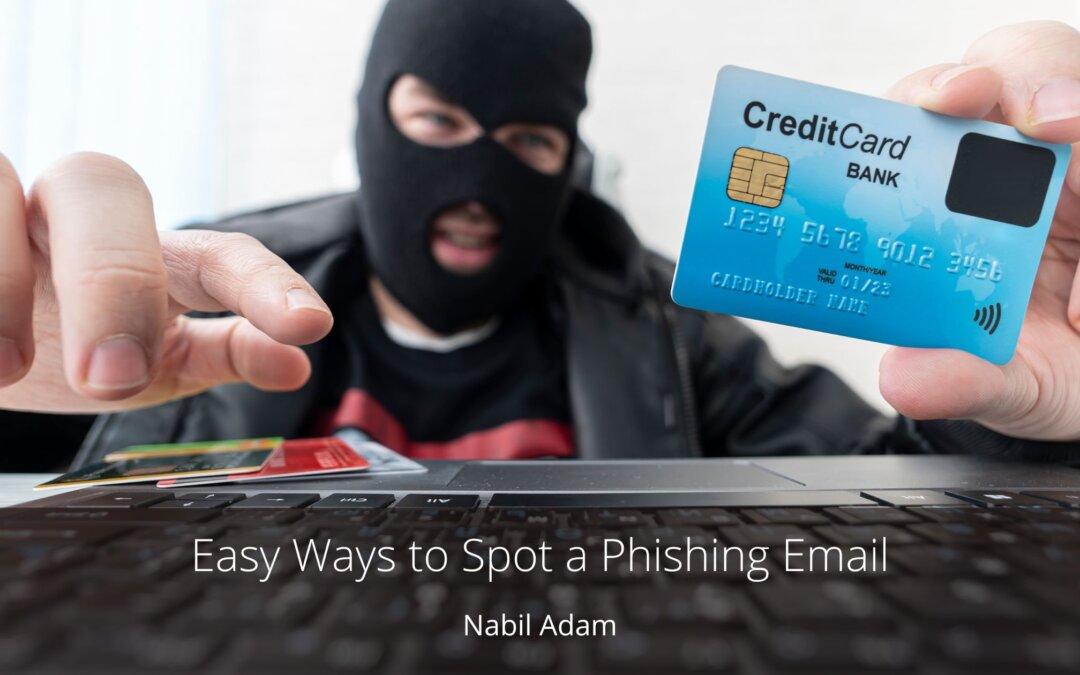Phishing emails, a predominant cybersecurity threat, ingeniously mimic legitimate communications to deceive recipients into divulging sensitive information. This deceptive practice has evolved with technology, becoming increasingly sophisticated and harder to detect. Understanding the nuances of phishing is crucial in the digital age, where email communication is ubiquitous in personal and professional spheres. These fraudulent emails often appear indistinguishable from genuine ones, skillfully replicating the style, tone, and even the branding of reputable organizations. The implications of falling victim to a phishing attack are severe, ranging from financial losses to identity theft and compromised organizational security. Therefore, recognizing the signs of a phishing email is not just a technical skill but a necessary defense in safeguarding personal and professional data.
The concept of phishing originated in the 1990s, after the analogy of “fishing” for confidential information. Initially, phishing attempts were straightforward, often characterized by poorly written messages and conspicuous mistakes. However, as digital literacy grew, so did the sophistication of these scams. Phishing now encompasses a range of techniques, including spear-phishing, targeting specific individuals or organizations, and whaling, focusing on high-profile targets. The evolution of phishing reflects a broader trend in cyber threats – the shift towards more personalized, convincing tactics. The backdrop of this progression is the increasing reliance on digital communication, especially email, as a primary mode of interaction in both personal and professional domains. The COVID-19 pandemic further amplified this, with a surge in digital communication paralleling a rise in phishing attempts. Phishing emails exploit human psychology, banking on the recipient’s trust, curiosity, or fear. They often contain urgent calls to action, prompting hasty responses that bypass rational judgment. Recognizing these tactics is vital in a digital communication landscape interwoven with daily activities. A clear understanding of the historical and psychological underpinnings of phishing provides a foundation for identifying and combating these malicious attempts.
Unusual Sender Information
One of the primary indicators of a phishing email is unusual sender information. Legitimate organizations typically use consistent, professional email addresses. In contrast, phishing emails may come from addresses that resemble known contacts but contain subtle discrepancies, such as misspellings or additional characters. These slight alterations are designed to evade detection while appearing familiar. For instance, an email purportedly from a reputable bank might come from an address that deviates slightly from the bank’s authentic domain name. It’s crucial to scrutinize the sender’s email address, especially when it involves sensitive information or requests. Another tactic phishers employ is email spoofing, where the sender’s address is forged to appear as if it comes from a legitimate source. This technique can be particularly deceptive, as it masks the true origin of the email. However, inconsistencies in the email header or discrepancies when replying to the message can reveal spoofing attempts. A useful practice is to cross-reference unexpected or unusual emails with the organization’s official contact information by visiting their website directly or through known, reliable channels.
Suspicious Content and Formatting
The content and formatting of an email offer vital clues in identifying phishing attempts. Phishing emails often use a feeling of urgency or threat—such as a notification about an impending lawsuit or account suspension—to compel the recipient to take quick action. These messages aim to create anxiety, pushing the recipient to act hastily without scrutinizing the email’s legitimacy. Another common element is requesting sensitive information, like passwords or financial details, which legitimate organizations typically do not ask for via email. The language used in phishing emails can range from overly formal to awkwardly informal, sometimes exhibiting poor grammar or spelling errors, although this is less common in sophisticated attacks.
Formatting also plays a critical role in spotting phishing attempts. Phishers may mimic the layout and design of legitimate emails, but upon closer inspection, there may be inconsistencies such as misaligned logos, unusual fonts, or mismatched colors. Hyperlinks in phishing emails are particularly treacherous. They often appear legitimate but lead to fraudulent websites. Hovering over links (without clicking) can reveal the actual URL, which may be vastly different from the displayed text. Additionally, attachments in phishing emails pose a significant risk, potentially containing malware. Unexpected or unsolicited attachments should always be cautiously approached, especially from unknown senders. By meticulously examining content and formatting, individuals can discern subtle but critical anomalies indicative of phishing.
The Role of Technology in Detection
While individual vigilance is paramount in detecting phishing emails, technology plays a crucial role in this battle. Modern email services incorporate advanced filters that automatically detect and quarantine suspicious emails, using algorithms to analyze patterns and characteristics typical of phishing. These filters examine the sender’s reputation, email content, and known phishing signatures. However, they are not infallible, and some phishing emails may bypass these defenses. Hence, users should not solely rely on technological safeguards.
Another critical technological tool is email authentication protocols like SPF (Sender Policy Framework), DKIM (DomainKeys Identified Mail), and DMARC (Domain-based Message Authentication, Reporting, and Conformance). These protocols validate the authenticity of email sources, helping to prevent email spoofing. Awareness and understanding of these protocols can empower users to scrutinize the technical validity of an email.
Cybersecurity education and training programs play an essential role in raising awareness about phishing techniques and their identification. Regular training sessions, simulations of phishing scenarios, and updates on the latest phishing trends can significantly enhance an individual’s ability to detect phishing attempts. Organizations should invest in such training programs to fortify their human firewall against phishing attacks. Therefore, combining technological tools with informed human judgment forms a robust defense against the ever-evolving phishing threat.
Identifying phishing emails is a critical skill in the digital era, blending vigilance, knowledge, and the use of technology. As phishing tactics become increasingly sophisticated, the responsibility falls on both individuals and organizations to stay informed and cautious. Recognizing unusual sender information, scrutinizing the content and formatting for inconsistencies, and leveraging technological tools are key strategies in detecting phishing attempts. It is essential to approach each email with a critical eye, especially when it requests sensitive information or conveys a sense of urgency.

